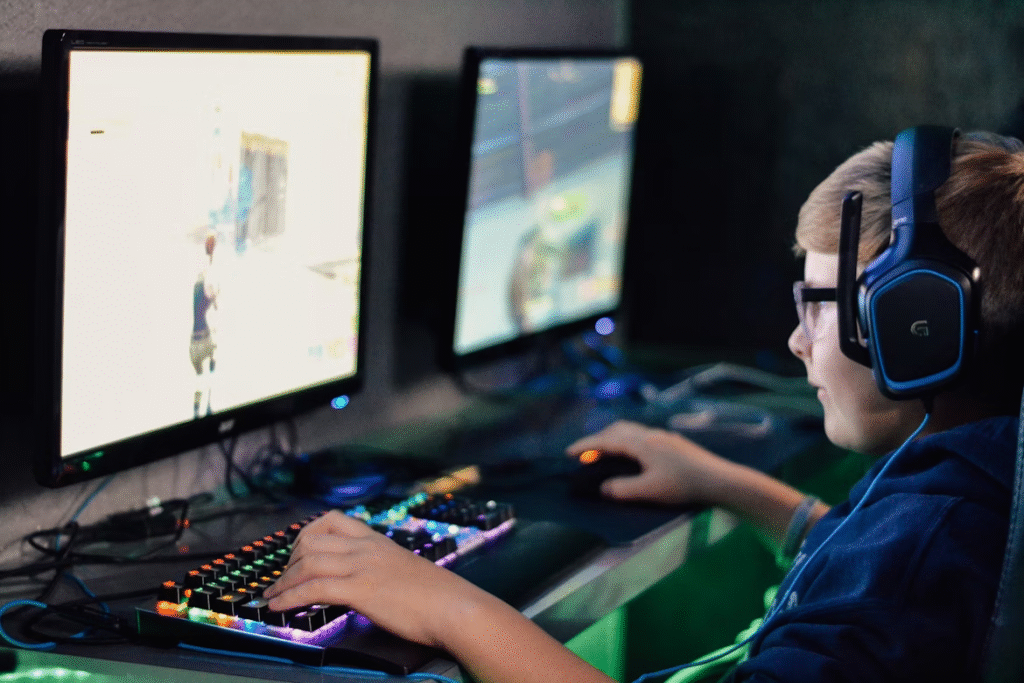
When people think about online games, they often focus on the rules or mechanics. But design has just as much influence on how players feel and how they decide to keep playing. The way a screen looks, how menus are arranged, and what kind of feedback appears after each action can build trust or create doubt within seconds. In the following sections, we’ll look at how different design choices shape player perception, from first impressions to future technologies that are slowly changing the field.

Colors, Contrast, and Clarity
Players usually decide in just a few seconds if they want to continue. That’s why visual design matters so much. Colors, contrast, and simple symbols guide the eye and reduce effort. A green button that signals “play” or “confirm” makes it easy to move forward, while a red mark works well for errors or warnings. When these cues are missing or inconsistent, people hesitate. That hesitation can quickly become doubt, and trust in the game begins to fade.
Another detail is how much information appears at once. A clean and organized screen gives players focus, while overloaded menus or flashing pop-ups often feel stressful. Games like Plinko.online, which rely on a single main action and simple visuals, highlight how minimal design can keep attention on the game itself. Clear paths, centered boards, and limited distractions make it easier to stay engaged.
Accessibility Features as a Measure of Fairness
A strong interface should feel simple, even for someone opening the game for the first time. Clear menus, readable text, and buttons placed where people naturally expect them reduce confusion. When the layout follows a logical order, players can focus on the game instead of searching for the right option. But when functions are hidden or scattered, frustration builds quickly. To make interfaces easier, developers often include:
- Menu hierarchy that highlights the most important actions first
- Button placement that follows common patterns, such as “confirm” on the right
- Customization tools, so players can resize or rearrange elements
- Accessibility settings like colorblind filters, scalable text, and adaptive controls
These features do more than just improve comfort. They make the game usable for different groups of players, from those with visual impairments to those who prefer larger fonts. When people feel the design includes them, they are more likely to trust it and continue playing.
Game Mechanics and Feedback Loops
The reaction of a game to the actions of players can be a significant influence on the sense of fairness and control in general. Actions can be instantly identified by something as simple as a sound effect, a brief animation, or a visible score update. With instant feedback, players are held to stay on the task, and they understand it is worthwhile. The slightest added sound when adding points or a flash display after a goal has been scored may not seem like much, but combined, they make an apparent beat, which keeps people engaged.
How transparent such systems are is very important in trust. When the scoring regulations are simple to follow and changes are immediately reflected on the field, the players consider the game fair. Mechanisms that are ambiguous or obscure can, on the contrary, doubt easily. There is another level of flexibility. Where a player has more than one route to reach a target, the player has a greater sense of control, and this freedom will often keep them motivated to keep going.
Psychological Impact of Design
Design is a significant factor in the perception of the fairness or unfairness of a game. Players usually do not just consider the outcome, but also the manner of displaying the outcome. Random items such as loot boxes or spinning wheels are based on luck, whereas progress meters or visible statistics are indicators of ability. They can motivate players in different ways, but the mix between the two plays a vital role. Trust tends to increase when odds or rules are well put across. When concealed, they are quickly suspicious, and motivation can be substituted by frustration.
| Design Element | Effect on Perception | Example |
| Loot boxes with no odds | Feels biased, lowers trust | Hidden probability drops |
| Loot boxes with odds | Feels more transparent | Published % chance per item |
| Skill meters or stats | Highlights effort and improvement | Visible progress toward a level |

Emerging Technologies and Future Trends
Technology is gradually transforming the appearance and feel of online games. Virtual and augmented reality already bring players outside as observers and make them feel as if they are a part of the surrounding things. These formats consider design not only in terms of screens but also space, distance, and perspective. This change causes the presence itself to be a factor of design, which affects the interpretation of interaction and justice by individuals.
Other tools are also transforming design. Interfaces responsive to player behavior can reorganize the menus or modify the difficulty level to performance, making games easier to follow. Blockchain further documents in-game purchases in an open record to minimize the skepticism surrounding virtual goods or currency. In the short term, design will probably get even more individualized, with layouts and systems accommodating personal preferences without losing their transparency in rules. These tendencies imply that the issue of fairness and trust will remain directly subject to technology’s impact on design.
Final Thoughts
Online gaming design does not simply refer to what a screen appears like. It influences trust, fairness, and usability right at the start. The impression created by the visuals is the initial one, and the interface and feedback indicators determine how the interaction between the players and the system occurs. Once these factors are uniform and open, trust increases.
Psychology is an added dimension. Motivation is heavily dependent on the relationship between chance and skill, and the design determines how this relationship is displayed. As new technologies such as VR and adaptive interfaces are introduced, the design will continue to play a key role in formulating the relationships between players and games.
Leave a Reply